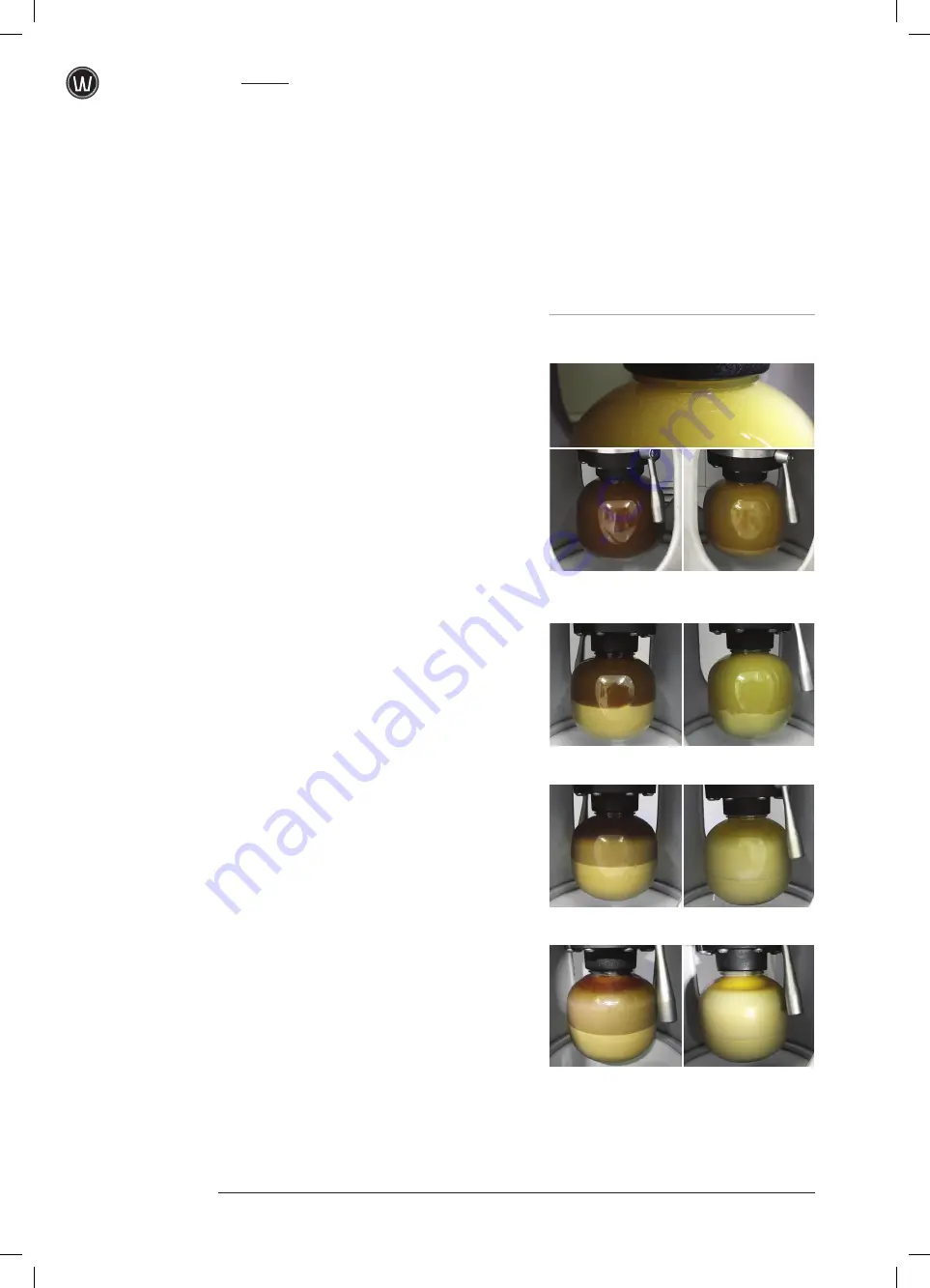
STAGE D: 24 hours after second clarification. Note
compacted layers and clear beer that appears in top
of sediment bottle.
STAGE C: After first clarification.
STAGE B: Fermentation Day 4.
STAGE A: Fermentation Day 1. Close inspection will
show many fine bubbles rising from the yeast.
Fig 4: Sediment Bottle Activity Phases
Ale – left bottle. Lager – right bottle.
8
USER GUIDE
ADJUST
There are two key processes in the adjust phase:
Fermentation and Clarification.
FERMENTATION
01.
Attach the WilliamsWarn Pressure Gauge to the
gas port (marked with a ‘G’) on the BrewKeg10
TM
lid to monitor pressure through the fermentation
and clarification process. You will want your fer-
mentation to read 1.5 bar (22 psi) after 24 to 36
hours and then, ideally, maintain this pressure.
It is good practice to remove the pressure gauge
once you are comfortable with the pressure
attained in your BrewKeg10
TM
and re-attach to
check as required. Please review the
APPENDICES
for options relating to fermentation pressure.
02.
Adjusting the VPRV pressure set point: If
required, once your BrewKeg10
TM
contains
CO
2
pressure from yeast activity (after 24-36
hours), you may increase the pressure set point
by turning the VPRV valve clockwise or you
can decrease the set point pressure by turning
the VPRV valve anti-clockwise. You may relieve
pressure by pressing the silver button in the
centre of the VPRV valve.
NOTE: Removing too much pressure quickly while
the ferment is in full swing could result in foaming out
of the VPRV.
03.
Maintain fermentation temperature between
18
-28ºC (65-82ºF) for approximately 4 days
or until fermentation has completed.
Note: A completed fermentation can take longer
for higher alcohol beverages and take less time with
certain yeast strains, so 4 days is a guideline. A lack of
yeast activity appearing in the sediment bottle is the key
indication as to whether a fermentation has complete.
04.
Check your sediment bottle for activity daily.
05.
It can be useful to shine a torch through the side
into the top, clearest part of the sediment bottle
to assess activity. The activity in the sediment
bottle will go through various stages as the
beverage ferments and clarifies:
A.
Yeast activity, lots of fine bubbles.
B.
Yeast sediment compacted, no activity.
Содержание BrewKeg10
Страница 2: ...VERSION 01...
Страница 17: ...1 1 BREWING INSTRUCTIONS NOTES...
Страница 18: ...1 1 USER GUIDE NOTES...
Страница 19: ...1 1 BREWING INSTRUCTIONS NOTES...
Страница 20: ......






































